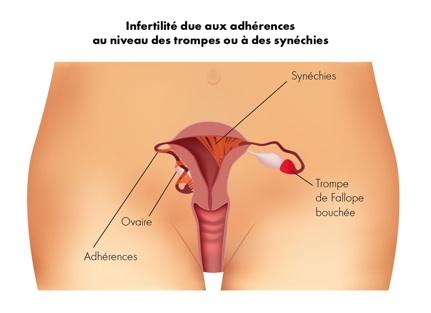Uterine synechiae or Asherman's syndrome correspond to intrauterine adhesions. This is the adhesion of the 2 sides of the uterus, normally the uterus is like a hollow cavity covered with a mucous membrane (a kind of carpet that lines it) and which prevents one side from sticking to the other: like an empty glove that can be stretched when the fingers are inserted. If the mucous membrane is damaged and disappears, the two sides of the cavity may stick to each other and thus reduce the size of the cavity, which may then compromise implantation and the progress of a pregnancy; these synechiae may be of variable size (surface) and therefore of variable consequences, but in very extensive forms they may even affect the volume of the menstrual period which is then absent. They can be partial or total, occupying respectively a part or the totality of the uterine cavity.
We have a very effective natural treatment to cure uterine synechiae permanently.
Order it and start the natural treatment for uterine synechiae early. Support is offered during the whole period of taking it. To contact us, click on the WhatsApp button in the right corner of your screen or contact us at +229 66 23 89 56
We have representation in all African countries and actively in the following countries: Cameroon, Ivory Coast, Mali, Senegal, Burkina Faso, Togo, Kenya, Nigeria, Gabon, Central African Republic, Benin, Chad, Congo-Brazzaville and Kinshasa. You can be sure that you will receive your products immediately after your order.
Delivery is free anywhere in the world
Causes of Uterine Synechia
Initially, a synechia is formed in reaction to a trauma of the uterine mucous membrane having caused the destruction of its basal layer. It then consists of a simple mucosal flange, easily removed by the passage of the hysteroscope during a diagnostic hysteroscopy. In the absence of treatment, this loose flange becomes fibrous, resistant, more or less thick, then muscular. It is then no longer covered by endometrium.
The following circumstances may be at the origin of the formation of a synechia:
- Curettage or aspiration for early miscarriage or voluntary termination of pregnancy, post abortum or post partum curettage.
- Retention of a terminated pregnancy, placental retention after childbirth or after termination of pregnancy.
- Operative hysteroscopy with fibroid resection, polyp resection, cure of uterine malformation, endometrialctomy, miscarriage during cervical dilatation.
- Myomectomy, conization.
- Significant endometrial atrophy due to hormonal deficiency related to menopause.
- Uterine infection, endometritis, genital tuberculosis, IUD infection.
- Post pelvic radiotherapy for cancer.
Certain factors favour the occurrence of uterine synechia following trauma to the endometrium:
- Softened uterus: this is the case during advanced pregnancy; retention of a dead egg; postpartum (after childbirth).
- The uterine evacuation technique with a respectively increased risk when using a suction cannula, a foam curette or a fenestrated curette.
- The occurrence of an infection following uterine evacuation.
- Presence of two traumatized areas in the endometrium located opposite each other, thus favouring healing in the form of a "fibrous bridge" by direct contact.
Symptoms of uterine synechiae
Most synechiae are asymptomatic (have no symptoms). They are often discovered incidentally during diagnostic hysteroscopy or hysterosalpingography. They are sometimes found during an infertility test and more rarely in the presence of suggestive clinical signs:
- Secondary amenorrhea (absence of menstruation) or oligomenorrhea (scanty menstruation), occurring in the aftermath of uterine curettage or aspiration. These signs are often accompanied by cyclical pelvic pain, explained by the difficulty of evacuating the blood present in the uterus at the time of menstruation. The diagnosis of synechia is made in this context after ruling out a new pregnancy, miscarriage or ectopic pregnancy by a pregnancy test and pelvic ultrasound.
- Infertility: the presence of synechiae in the uterine cavity can prevent the meeting of spermatozoa and ovum or prevent the implantation of the embryo.
- Recurrent early miscarriages: the presence of synechiae sometimes causes the expulsion of the embryo because the uterine cavity is reduced in size with a poor quality endometrium, thus preventing embryonic development.
- Placental pathologies: placenta previae, placenta accreta.
We have a very effective natural treatment to cure uterine synechiae permanently.
Order it and start the natural treatment for uterine synechiae early. Support is offered during the whole period of taking it. To contact us, click on the WhatsApp button in the right corner of your screen or contact us at +229 66 23 89 56
We have representation in all African countries and actively in the following countries: Cameroon, Ivory Coast, Mali, Senegal, Burkina Faso, Togo, Kenya, Nigeria, Gabon, Central African Republic, Benin, Chad, Congo-Brazzaville and Kinshasa. You can be sure that you will receive your products immediately after your order.
Delivery is free anywhere in the world
Plants and natural remedies to treat and relieve uterine synechiae
-
Yarrow
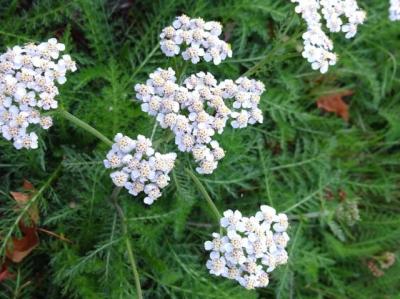 Yarrow is a decongestant herb for the uterus that helps reduce menstrual cramps. It promotes blood circulation and helps regulate blood flow. It has an antispasmodic action and helps relieve pain and inflammation. The yarrow can thus prove to be effective in the event of painful and abundant rules. It can be consumed as an herbal tea.
Yarrow is a decongestant herb for the uterus that helps reduce menstrual cramps. It promotes blood circulation and helps regulate blood flow. It has an antispasmodic action and helps relieve pain and inflammation. The yarrow can thus prove to be effective in the event of painful and abundant rules. It can be consumed as an herbal tea.
-
Green tea
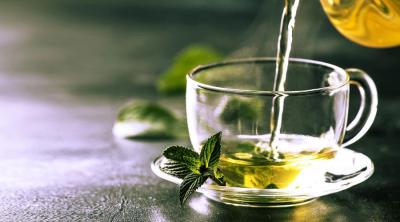 A powerful antioxidant, green tea helps reduce oxidative stress by fighting free radicals that damage cells and spread inflammation. Due to its content of epigallocatechin gallate (EGGG), known for its antifibrotic properties, green tea helps reduce endometrial cell proliferation and endometriosis lesions. In addition, it acts on estrogen receptors, thus regulating their overproduction.
A powerful antioxidant, green tea helps reduce oxidative stress by fighting free radicals that damage cells and spread inflammation. Due to its content of epigallocatechin gallate (EGGG), known for its antifibrotic properties, green tea helps reduce endometrial cell proliferation and endometriosis lesions. In addition, it acts on estrogen receptors, thus regulating their overproduction.
-
Turmeric
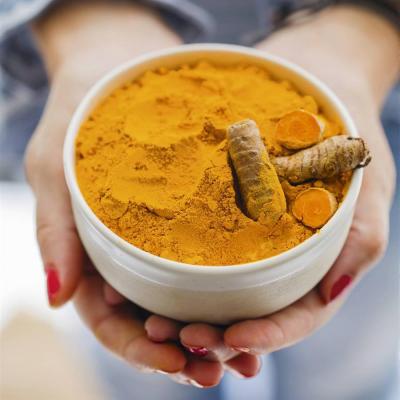 A study shows that curcumin, the active ingredient in turmeric, can reduce endometrial proliferation. Indeed, curcumin has powerful anti-inflammatory and antioxidant properties. It can therefore be beneficial in reducing the pain associated with endometriosis. Curcumin can be taken in capsules.
A study shows that curcumin, the active ingredient in turmeric, can reduce endometrial proliferation. Indeed, curcumin has powerful anti-inflammatory and antioxidant properties. It can therefore be beneficial in reducing the pain associated with endometriosis. Curcumin can be taken in capsules.
-
Fenugreek infusion
 Fenugreek is an herb with interesting medicinal properties. It is highly recommended for women as it is believed to support hormonal balance as well as the menstrual cycle, although its effectiveness in treating abnormal vaginal discharge is unproven.
Fenugreek is an herb with interesting medicinal properties. It is highly recommended for women as it is believed to support hormonal balance as well as the menstrual cycle, although its effectiveness in treating abnormal vaginal discharge is unproven.
Ingredients:
1 tablespoon of fenugreek seeds (10 g)
1 glass of water (200 ml)
Preparation:
Carefully crush 1 tablespoon of fenugreek seeds, using a pestle and mortar if possible.
Bring the glass of water to a boil and pour it over the seeds.
Cover with a lid and let steep for 15 minutes.
Consume up to twice a day for 10 days.
-
Plain yogurt
 Plain yogurt is one of the best natural remedies to help fight the fungi and bacteria that cause vaginal infections. This is due to its high concentration of lactobacilli, healthy bacteria that have the ability to regulate the vaginal flora to change the environment that pathogens need.
Plain yogurt is one of the best natural remedies to help fight the fungi and bacteria that cause vaginal infections. This is due to its high concentration of lactobacilli, healthy bacteria that have the ability to regulate the vaginal flora to change the environment that pathogens need.
To keep infections and yeast at bay, the best way is to drink at least half a glass of yogurt a day. If you notice any reaction or if you suffer from intolerance, consult your doctor first.
We have a very effective natural treatment to cure uterine synechiae permanently.
Order it and start the natural treatment for uterine synechiae early. Support is offered during the whole period of taking it. To contact us, click on the WhatsApp button in the right corner of your screen or contact us at +229 66 23 89 56
We have representation in all African countries and actively in the following countries: Cameroon, Ivory Coast, Mali, Senegal, Burkina Faso, Togo, Kenya, Nigeria, Gabon, Central African Republic, Benin, Chad, Congo-Brazzaville and Kinshasa. You can be sure that you will receive your products immediately after your order.
Delivery is free anywhere in the world
-
Garlic
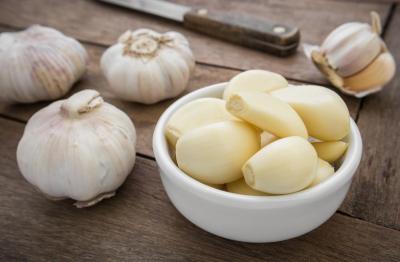 Garlic is considered the most powerful natural antibiotic. Its active compounds contain antibacterial properties, although there is no evidence that its use can eliminate this problem. However, you can try to include it in your menus:
Garlic is considered the most powerful natural antibiotic. Its active compounds contain antibacterial properties, although there is no evidence that its use can eliminate this problem. However, you can try to include it in your menus:
Ingredients:
. 1 clove garlic
. 1 glass of water (200 ml)
Preparation:
Crush the raw garlic clove and add a glass of hot water.
Let stand for 10 minutes and drink the infusion.
-
Milk and turmeric
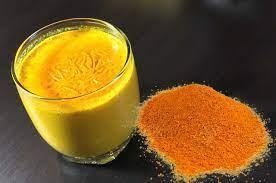 It is thought that a combination of milk and turmeric would be a simple antibacterial remedy (due to the antibacterial properties of turmeric) that would kill yeast and protect the vaginal area. However, there is not enough evidence to support the safety of these claims; if you decide to take it, first check that you are not allergic to any of the ingredients.
It is thought that a combination of milk and turmeric would be a simple antibacterial remedy (due to the antibacterial properties of turmeric) that would kill yeast and protect the vaginal area. However, there is not enough evidence to support the safety of these claims; if you decide to take it, first check that you are not allergic to any of the ingredients.
Ingredients:
. 1 teaspoon turmeric powder (5g)
. 1 glass of milk
Preparation:
Heat the glass of milk, then add the teaspoon of turmeric powder.
Serve warm and repeat daily until the flow is relieved.
Taste once a day for a week.
-
Raspberry leaf: POST-ABORTION
 After a spontaneous or induced abortion, the uterus remains in a vulnerable state that needs rest, nutrition and confinement.
After a spontaneous or induced abortion, the uterus remains in a vulnerable state that needs rest, nutrition and confinement.
Raspberry is a soft, fresh-leaved shrub known for its health benefits for women, including stimulating and tonic uteri. Its consumption prevents spasms and relaxes the uterus after the contractions suffered during an abortion, while repairing and cleaning the uterine walls.
As a hormonal regulator, it helps the uterus to regain its condition so that subsequent menstruations can take place normally. On the other hand, the leaves are rich in iron, which allows to recover this mineral lost during bleeding.
Preparation:
Boil water and extinguish the fire.
Add a tablespoon of dried leaves, let steep for 3 minutes and strain.
Consumption: three cups a day for two weeks. The dose can be repeated for three months.
Recommendation: Consume completely dry leaves to avoid poisoning. Filter well the infusion. Raspberry leaves are particularly prickly.
-
Aloe vera
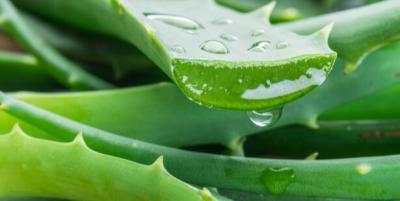 The aloe vera plant is known for its moisturizing benefits. In the same way that it activates its properties at the skin level, aloe vera acts gently in the vaginal ecosystem, keeping it hydrated.
The aloe vera plant is known for its moisturizing benefits. In the same way that it activates its properties at the skin level, aloe vera acts gently in the vaginal ecosystem, keeping it hydrated.
It can be applied externally by spreading the pulp over areas of the vulva that itch, burn or are dry. It is also a natural lubricant that does not change our pH. Internally, it is used as an egg to cool, reduce inflammation and heal wounds caused by vaginal infection.
Preparation:
. Soak the stem in water for one minute to remove iodine and soil.
. Cut the spines and peel the stem on both sides.
. Remove the transparent pulp, roll it into an egg and carefully insert it into the vaginal canal.
Application: Use in the evening for three nights in a row, the heat of the body will absorb the pulp in the vaginal mucosa. For external use, there are no contraindications, it can be brushed in case of discomfort.
Recommendation: use fleshy stems and make sure there is no allergic reaction by testing the pulp on the skin beforehand. It can be used as a lubricant before using a menstrual cup.
-
Vaporisations
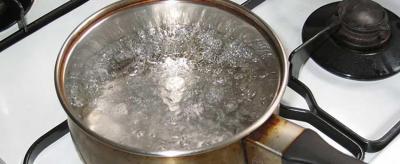 Spraying is a home exercise that originates in Mayan practices. Its multiple functions range from the ritual of cleaning the uterus - since it releases toxins and endometrial debris - to the treatment of vaginal and urinary infections, as well as the healing of internal cracks or wounds. In addition, heat tones the uterus and balances the internal cold after delivery.
Spraying is a home exercise that originates in Mayan practices. Its multiple functions range from the ritual of cleaning the uterus - since it releases toxins and endometrial debris - to the treatment of vaginal and urinary infections, as well as the healing of internal cracks or wounds. In addition, heat tones the uterus and balances the internal cold after delivery.
For its part, sage is considered one of the main allied plants of women. By its name (from the Latin salvus: save and salveo: heal), it has a ritual status of energetic and therapeutic cleanser. In vaporization, it helps to a harmonious toilet, gives a tonic effect and a good genital smell. It is also phytoestrogenic: it regulates hormonal disorders.
Preparation:
. Boil water and turn off the heat. Add two handles of dried sage.
. Let steep for 3 to 5 minutes.
. Pour the infusion into the container to use (avoid plastic). Make sure the temperature is pleasant for the body.
Application: Sit at a height that allows steam to enter our vaginal canal, stay there for 15 to 20 minutes.
Cover us with a towel or blanket to avoid cooling.
Recommendation: Avoid exposure to drafts after steaming. Do not use vaginal baths during menstruation. Sage is only one option among the many medicinal plants that can be used for baths, the choice is free.
Advice to avoid uterine synechiae
- Use condoms that do not cause latex allergies
- Take anti-contraceptive pills if you don’t want to get pregnant. This allows you to avoid abortion because abortion is a major cause of uterine synechiae.
- Avoid chemicals in menstrual products such as pads or scented towels.
- Adopt good intimate hygiene
- Consult a gynecologist at least once a year.
We have a very effective natural treatment to cure uterine synechiae permanently.
Order it and start the natural treatment for uterine synechiae early. Support is offered during the whole period of taking it. To contact us, click on the WhatsApp button in the right corner of your screen or contact us at +229 66 23 89 56
We have representation in all African countries and actively in the following countries: Cameroon, Ivory Coast, Mali, Senegal, Burkina Faso, Togo, Kenya, Nigeria, Gabon, Central African Republic, Benin, Chad, Congo-Brazzaville and Kinshasa. You can be sure that you will receive your products immediately after your order.
Delivery is free anywhere in the world

